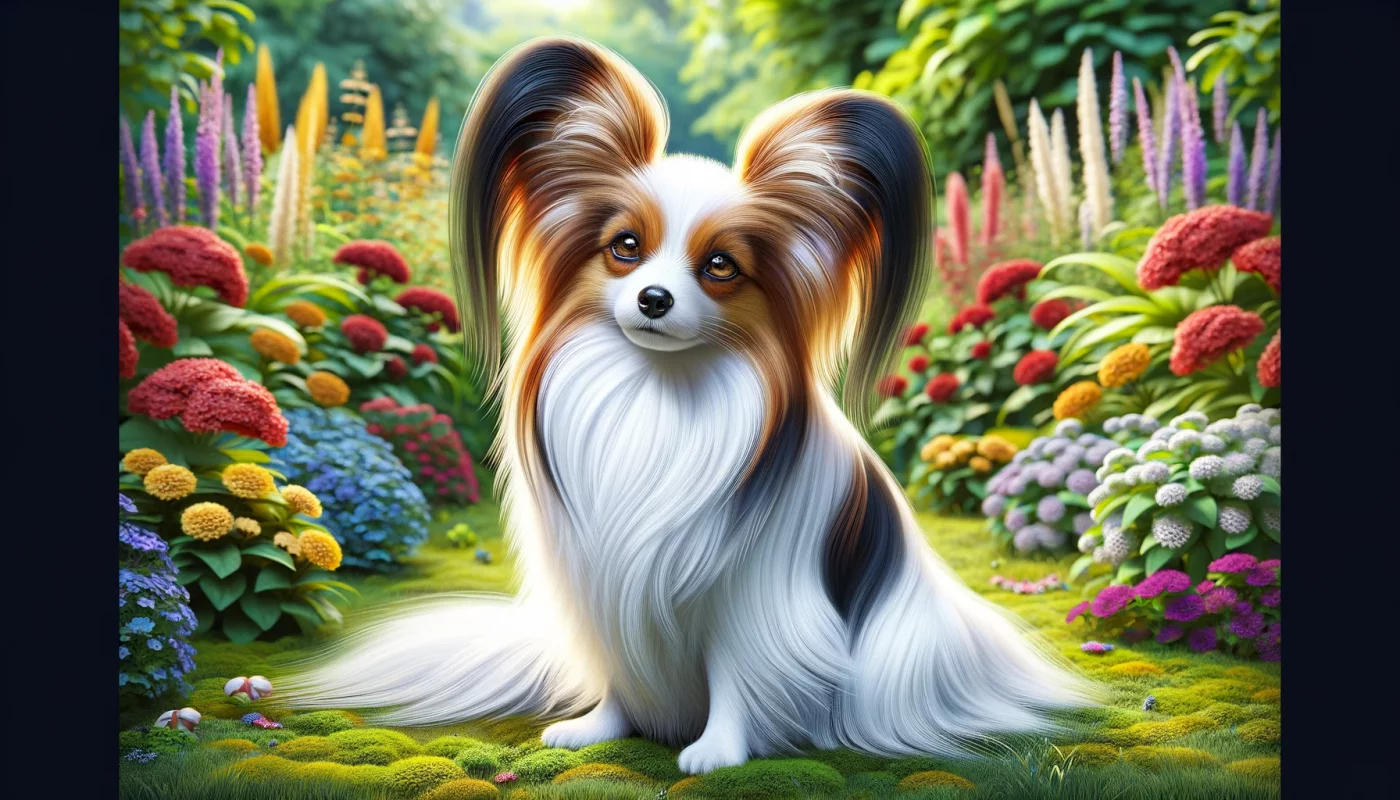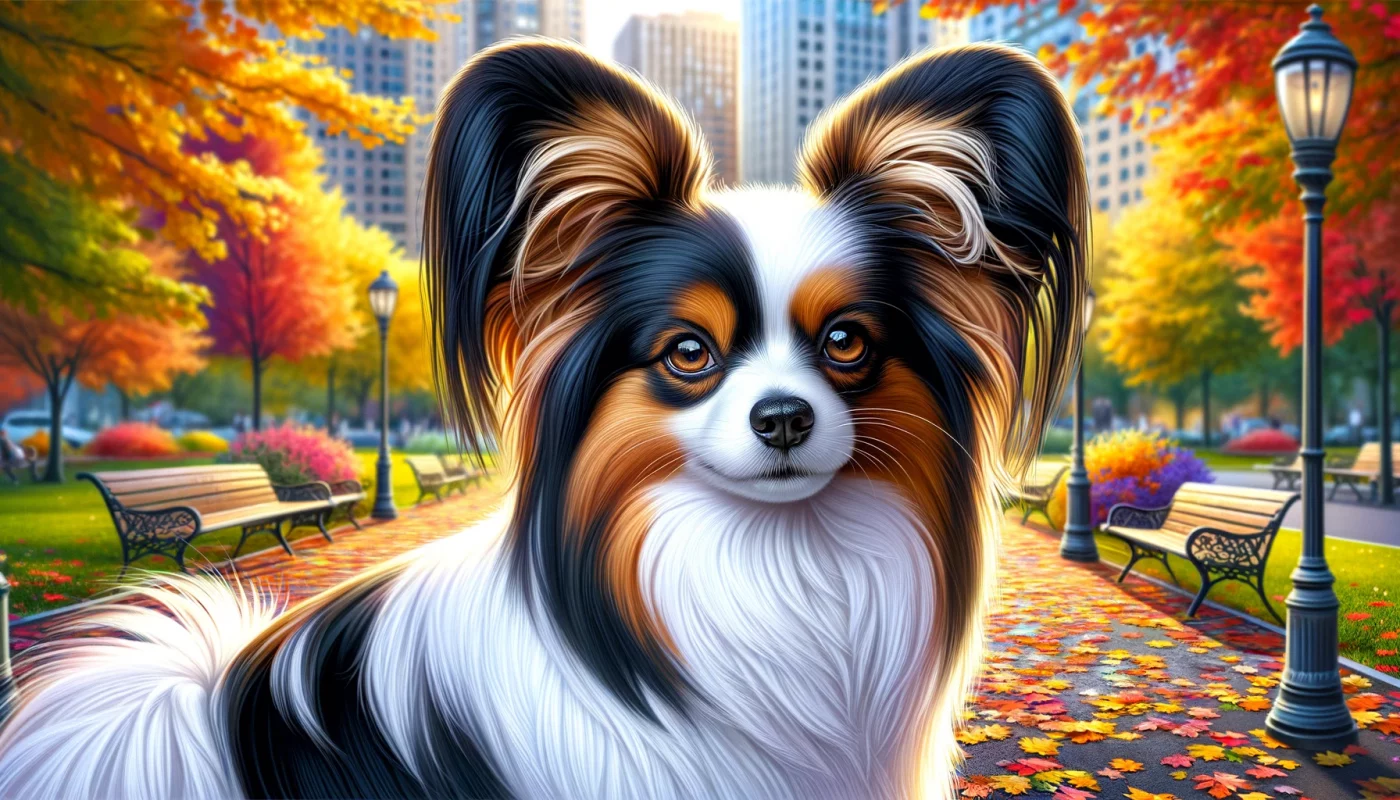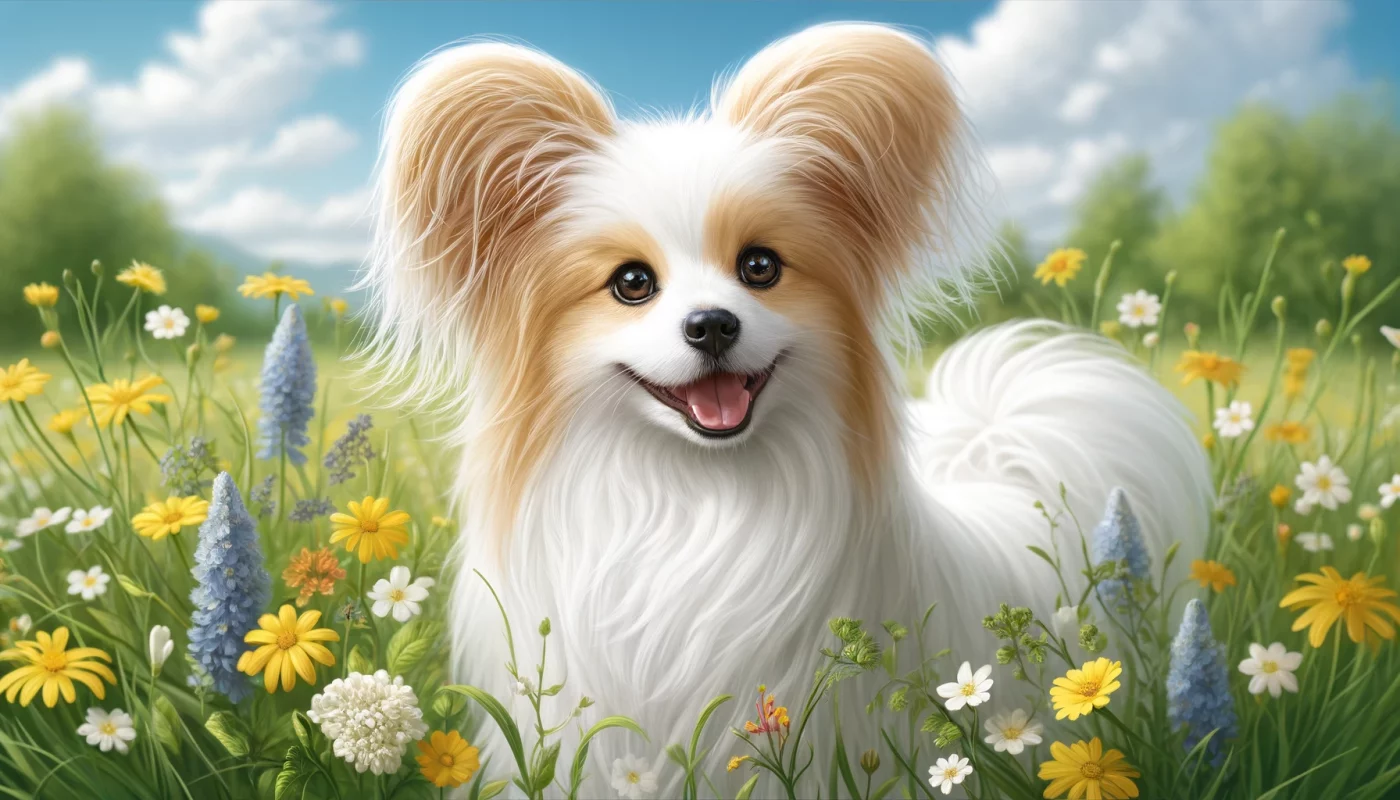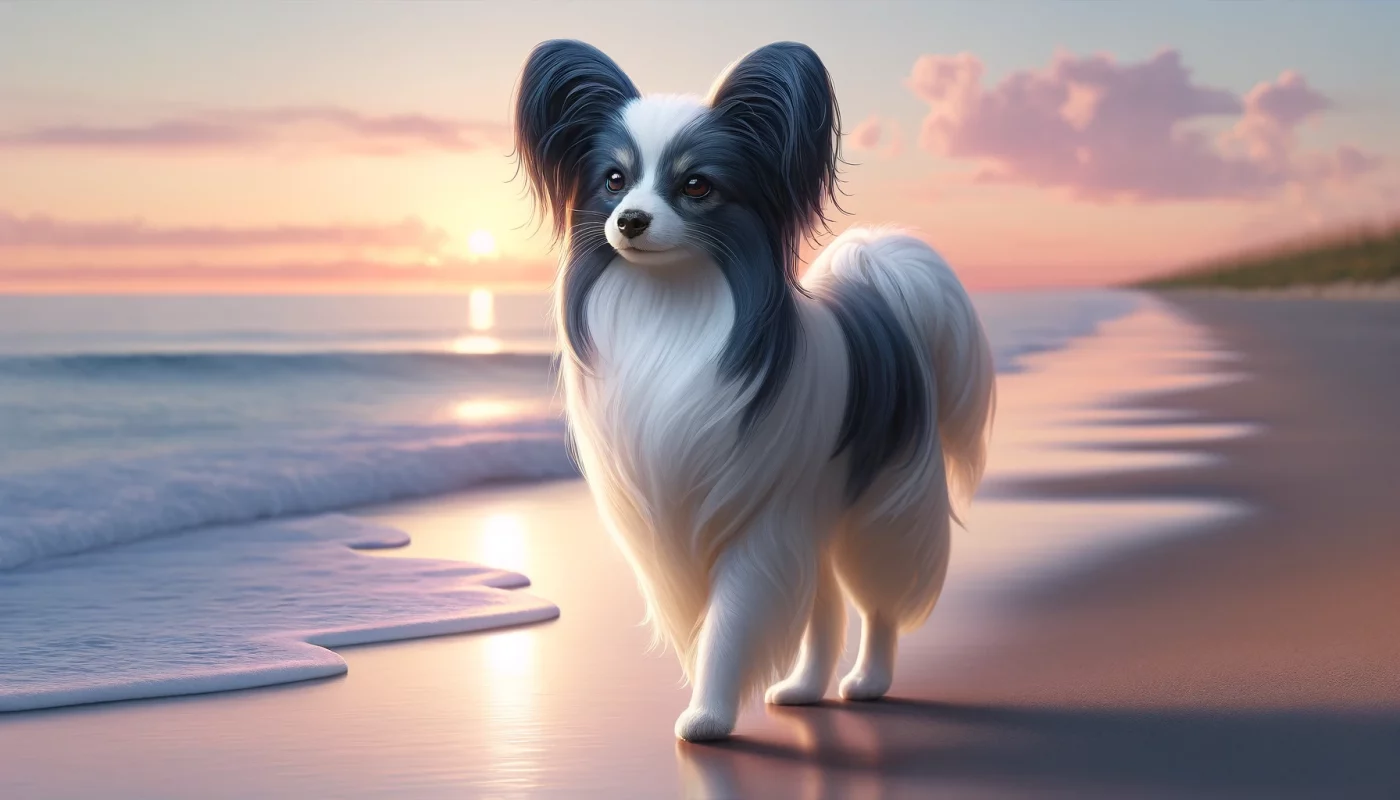Frequently Asked Questions About Papillon Colors
1. What are the most common color patterns found in Papillons?
The most common color patterns in Papillons include white and sable, white and black, and tricolor (black, white, and tan). These classic patterns are highly recognizable and cherished among Papillon enthusiasts. The white and sable pattern features a white base with sable (brown and black) patches, often over the eyes, ears, and sometimes the tail. White and black Papillons exhibit clear, sharp divisions between the two colors, often with the black forming a mask-like pattern over the face. The tricolor Papillon adds tan highlights to the mix, particularly above the eyes and around the cheeks, creating a striking and distinctive look.
2. Can Papillons be solid colored?
No, Papillons cannot be solid colored. According to the breed standards set by major kennel clubs like the American Kennel Club (AKC), Papillons must have a predominantly white base with patches of one or more other colors. The standard specifies that the color other than white should cover both ears, at least partially, and around the eyes, extending to the ears and across the back. This pattern requirement ensures the distinct appearance of the breed is maintained.
3. What does a “phantom” coloration mean in Papillons?
Phantom coloration in Papillons refers to a specific pattern where the dog has distinct markings that resemble the phantom masks used in theatre, particularly around the eyes and ears. This term isn’t officially recognized in breed standards but is sometimes used by breeders to describe the mask-like pattern often seen in tricolor or black and white Papillons. These markings enhance the expressive face of the Papillon, making the eyes appear larger and more animated.
4. How rare is the lemon and white color in Papillons?
The lemon and white coloration in Papillons is quite rare. The lemon refers to a light, creamy tan that is much more subdued than the vibrant reds or deep browns typically seen. This pale, yellowish color usually appears as soft markings on the head and body. Because it is less common, lemon and white Papillons can be particularly sought after by collectors and enthusiasts who appreciate the subtle beauty of this unique color pattern.
5. Are there any color restrictions for Papillons in dog shows?
Yes, there are color restrictions for Papillons in dog shows. While Papillons can come in a variety of color combinations, the breed standard requires that all Papillons must have a white base with coloring on the ears and around the eyes that may extend to cover more of the face. Colors that are highly undesirable and could result in disqualification include solid colors without white, albinism, or any colors that excessively cover the white base. These standards are put in place to maintain the breed’s distinctive appearance.
6. What is the significance of the color distribution on a Papillon’s coat?
The significance of color distribution on a Papillon’s coat is primarily aesthetic, designed to enhance the breed’s elegant and butterfly-like appearance, which includes the symmetrical pattern around the face and ears. Proper color distribution can also impact a dog’s success in the show ring, as judges look for well-balanced markings that align with breed standards. Symmetry, particularly in the face markings, is highly valued because it accentuates the Papillon’s alert and expressive character.
7. Can Papillons have a blue coloration?
Yes, Papillons can have a blue coloration, but it is quite rare. In this context, “blue” refers to a dilute black which appears as a slate or greyish color. This color results from a dilution gene affecting the black pigment, turning it into a softer, more muted shade. Blue markings in Papillons are considered unique and can be very visually striking, although they must still comply with the breed’s standard of having a predominantly white base.
8. How does genetics influence the color of a Papillon?
Genetics plays a crucial role in determining the color of a Papillon’s coat. The coat color in Papillons is controlled by multiple genes that dictate pigment distribution and type. These genes determine whether a Papillon will display colors such as black, red, sable, or rare colors like blue. Genetics also dictates the pattern and symmetry of the markings, which are critical aspects of the breed’s standard appearance. Breeding strategies can influence the prevalence of certain colors within the population by selecting for desirable traits according to breed standards.
9. What are the challenges in breeding for specific colors in Papillons?
Breeding for specific colors in Papillons presents several challenges, primarily due to the complexity of canine genetics. Desired color traits can be difficult to predict and control, as they are often influenced by multiple genes. Furthermore, striving for specific colors should not compromise the overall health and genetic diversity of the breed. Ethical breeders must balance aesthetic goals with health considerations, ensuring that their breeding practices do not perpetuate genetic disorders or negatively impact the breed’s genetic diversity.
10. How should I care for my Papillon’s coat to maintain its color and health?
To maintain the color and health of your Papillon’s coat, regular grooming and proper diet are essential. Brushing the coat several times a week helps to remove dirt and distribute natural oils, which enhance the coat’s sheen and color vibrancy. Bathing should be done with a high-quality shampoo formulated for dogs to avoid stripping the coat of its natural oils. Additionally, a balanced diet rich in omega fatty acids and antioxidants can promote healthy skin and fur, keeping your Papillon’s coat bright and lustrous. Regular vet check-ups and proper parasite control are also crucial in maintaining overall coat health.







 Toledo, United States.
Toledo, United States.